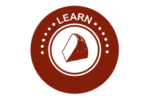Submitted by: Heather Donahue
I enjoyed my first trip to the Cheese Maker’s Resource Conference in New Holland, PA. As it is titled, there was a strong focus for cheese makers. While there was a little bit of information for marketing, mongering and managing, much of the conference focused on the needs o f cheese makers. Several technical sessions caught my eye, most notably the Cheddar series and the Affinage series.
Dave Potter from Dairy Connection was the instructor for the cheddar sessions. He focused on the cheddar make process- including acid production in the vat, not during the aging process. Dave talked in detail about the factors that can influence the quality of the aged cheese. Rennet type can affect the final cheese taste as different rennets cut the proteins in different lengths. Some cheeses cultures can continue to digest the proteins in aging to minimize the bitterness. Rennet action can also be affected by the pH of the milk- it will work faster at a lower pH. Curd cutting time can influence the moisture of the cheese: a firm set will give a softer cheese, a soft set will yield a firmer cheese that will also be drier since some fat will be lost too. After cutting, healing is an important step, without it, you will lose fat. Consistent heating in the cook step is better than a steep rise in temperature. Milling step is important to increase surface area of the curd to absorb salt, also allowing more surface area for whey to escape during pressing. Salting should be broken up into 3 steps as too much salt to fast, it will be lost in the whey drain off.
After draining/pressing, cheeses would be moved next to the aging space. Peter Dixon presented three sessions on affinage. He began by covering environmental conditions: temperature, humidity, ventilation(air mixing), and oxygenation(air exchange). Temperature can influence what is growing on the cheese during aging- for example, yeasts like cooler temperatures(37-72F) than Coryneforms(50-60F). Humidity can influence the thickness of the cheese rind. Ventilation is important, but too much will dry out the cheeses. Air exchange is important to remove build up of ammonia in the aging space.
The second affinage session focused on the cheese caves, cellars and aging rooms. Cellars are close to the make room and have a lower construction cost. An aging room is usually the lowest cost and is easy to construct. Dedicated aging space is important to provide stability for the cheese where the temperature, humidity and ventilation can be regulated. Cooling is usually accomplished with refrigeration systems, with ventilation and humidity affected by temperature. Cheese aging space can be calculated by figuring 1cu. Ft of cheese weighs 80lbs, with 30 cu ft of space needed for 8o lbs of cheese for aging (50 cu ft if drying the cheese). Different types of cheeses will require different conditions. Wood shelving can be used to minimize moisture loss from cheese since it will either absorb or give off water depending on the humidity of the room. In the interest of food safety, Peter was emphatic that water should not be put on the floor to increase humidity- the air should be humidified, not wetting the floor.
One of the reasons I was excited to attend this presentation is because it has been difficult to find resources for designing a cheese cave for aging our cheeses. Peter recommended the Profession Fromage’s The Cheese Ripening Guide as one of the most comprehensive resources he has found. Overall, I found the conference to be very beneficial. The only disappointment was that there was no trade show. There was a lot of time for cheesemakers to network during breaks and meals, which was a great opportunity.


